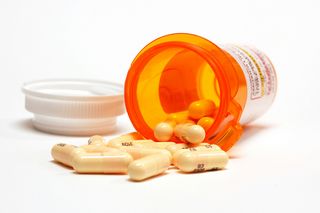Why Americans' Prescriptions Are Going Unfilled

An increasing number of Americans are not filling prescriptions for their medications because they can't afford to, according to a new survey from Consumer Reports.
Results show that 45 percent of people under age 65 who don't have insurance coverage for prescriptions said they had not filled a prescription in the last year because of the cost. Last year, 27 percent of this group said the same.
Additionally, 84 percent of working-age people in the U.S. without insurance coverage for prescriptions said they had taken some action — such as spending less on groceries or postponing paying other bills — in order to pay for their medications, an increase from 71 percent last year.
About 15 percent of people in the U.S. don't have insurance coverage for their prescription medications, said Consumer Reports editor Lisa Gill.
In the survey, Consumer Reports researchers also aimed to find the biggest source of financial problems for consumers that put a dent in their general purchasing power.
"For people who regularly take a prescription medication, their medical bills and medication bills, when they have financial problems, those are their No. 1 problem," Gill said.
The survey results showed that 50 percent of people without prescription drug coverage, and 15 percent of those with drug coverage,said that in the past six months they have been unable to afford their medical bills. Smaller percentages said they were unable to afford gas for their car (32 percent with coverage and 15 percent withoutcoverage)or that they had missed a mortgage payment(8 percent and 2 percent).
Sign up for the Live Science daily newsletter now
Get the world’s most fascinating discoveries delivered straight to your inbox.
The researchers also found an increasing number of people taking "potentially dangerous" measures to save money on their health care. Among those without prescription drug coverage, 63 percent said they put off a doctor's visit, whereas 48 percent said the same last year. And 62 percent said they declined a medical test because of the cost, compared with 33 percent last year.
People also reported cutting pills in half and skipping doses to stretch their medications, Gill said.
There are better ways that people can save money on their medical costs, she said.
"Ask if there is a generic drug that is equivalent to the brand-name drug that people are taking," Gill said. About 75 percent of brand-name drugs have a generic version.
She also suggested looking for the prescription drug discount plans that many stores now offer Kmart, Target, Walmart and many others all offer discount programs. The plans vary — some involve a fee to join, and each has its own list of drugs that are available for a discount. "Shop around," she said, "and if your drug isn't on the list, ask if they have another discount program with a different list."
Finally, she said, for those who need to take a brand-name drug that isn't available for a discount, pharmaceutical companies offer programs that may provide some financial help. They offer 30-day free trials, or a small discount on the price for a limited time.
"These programs aren't great, and you have to read the fine print," Gill said. But they do offer something to consumers, she said.
The telephone survey was conducted with a nationally representative sample of households with telephones. Researchers conducted interviews with 1,158 adults who currently take prescription drugs. This is the fourth year that Consumer Reports has conducted the survey.
Pass it on: The number of Americans not filling prescriptions for their medications because they can't afford to has increased.
This story was provided by MyHealthNewsDaily, a sister site to LiveScience. Follow MyHealthNewsDaily on Twitter @MyHealth_MHND. We're also on Facebook & Google+.
